Results 4,911 to 4,920 of 12094
Thread: Anandtech News
-
04-15-15, 09:32 AM #4911
Anandtech: Imagination Launches New Low Power Wireless IP: Ensigma Whisper
Today Imagination is launching a new set of licensable wireless intellectual property (IP) called 'Ensigma Whisper' to complement its portfolio of other SoC IPs. This announcement gives Imagination a more complete portfolio of large SoC IP blocks and notably differentiates Imagination from ARM who does not have a comparable wireless IP offering. Imagination claims the patented power optimizations makes Whisper the highest efficiency wireless IP available.
Customers licensing Ensigma Whisper receive access to Imagination's 'Radio Processing Unit' or RPU. This RPU is a complete set of IP from antenna to software, including all parts in between such as RF transceivers and baseband processing.
Imagination considers the Ensigma Whisper brand to be a collection of different wireless IPs, and is launching three models today. The C5300 is a Bluetooth LE (Low Energy) solution, C5400 is Wi-Fi 802.11n 1x1 and the C5401 is a combination model featuring both with separate paths enabling simultaneous operation. Here's a gallery of the Imagination overview slides for each model.
Gallery: Imagination Ensigma Whisper BTLE and WiFi Models
Imagination plans to fill out the Whisper line with more protocols such as LTE CAT 0/1, 802.15.4 and 802.11ah. This will provide more mobility as well as mesh networking capabilities.
Imagination actually already had wireless IP in their portfolio via the high power Ensigma Explorer series, but to meet the stringent size, cost, and power requirements of SoCs targeted to IoT and wearable applications Enigma Whisper was a redesign from the ground up. During the press briefing we were given an opportunity to ask questions and this avenue yielded some interesting details.
While most of us know that devices tend to sleep more than they are awake, Chakra Parvathaneni, vice president of the Ensigma business operations at Imagination, provided some numbers sourced by profiling a variety of IoT and wearable devices. Chakra stated that for every 300ms of time, a typical IoT device is only awake 4ms. Furthermore, when a device is connected to a populated WiFi network, only 1 out of every 100 times RX packets are processed is there also TX activity. As a result Imagination focused its optimization efforts on sleep power and RX efficiency.
One of these optimizations is a patented technique called early packet abortion, which works in tandem with rapid sync convergence. Imagination's internal data showed that on a populated Wi-Fi network a huge number of packets being synchronized to and decoded by a given device are actually for other devices. These are normally discarded but only after significant signal processing (and thus power). To prevent this waste, after decoding a packet actually intended for itself, Whisper saves metadata about the synchronization and decoding operations performed. In continued operation, as long as the connected access point does not change, Whisper uses this meta data to take short cuts in synchronizing and decoding future packets. This improves efficiency for self-addressed packets and allows early abortion of packets intended for other devices.
Other optimizations discussed by Chakra are that the Ensigma Whisper baseband was optimized to operate at 20 or 40 MHz frequencies (depending on wireless channel width) and use an 8-bit data path. Chakra mentioned this is a significant improvement over traditional designs that operate at 80 MHz and use a 10-bit data path.
The Imagination supplied data shown above gives the benefits of these optimizations. While we cannot do independent verification of this data yet, it is great to see continuous development in wireless power efficiency.
Finally, Imagination states that the embedded microcontroller of the Ensigma Whisper can be loaded with custom firmware to provide protocol layer 2 processing and even application level logic, eliminating the need for a paired general purpose CPU. If a general purpose CPU is needed, Imagination would love to sell you its MIPS CPUs, but stated Ensigma Whisper is compatible with almost any CPU type (including ARM).
On the software side, Imagination offers connectivity of devices to internet servers via their Flow Cloud stack. Flow Cloud provides features such as device and user management, data logging, event handling, asynchronous messaging, e-payments, and even internet radio.
Ensigma Whisper is available now for licensing, so we should see devices containing it later this year.
More...
-
04-15-15, 11:00 AM #4912
Anandtech: Huawei Announces New P8 And P8 Max
Today at the London launch event Huawei announced two new successors in the Ascend P-series of smartphones: the P8 and P8 Max. Noticeable lacking during the announcement is the Ascend brand name. It seems Huawei has dropped it in favour of the simpler P8 and P8 Max model names. Huawei has traditionally targeted the P-series towards the high end segment in Europe by offering premium build quality in very thin form factors. This is the fourth iteration of the P-series after the first announcement of the 2012 P1 and following P6 and P7.
The P8
The P8 here is a worthy successor to the Ascend P7 as it continues tradition and design language, albeit in a slightly bigger form factor. The P8's design keeps the premium iindustrial language from the P7 while improving on details. This time we see a full uni-body design instead of the glass back employed on the P7, enabling for a more solid build.
The P8 bumps up the screen size to 5.2" compared to the 5" P7, while still maintaining the same 1080p resolution. The screen is employs a JDI IPS-Neo display with up to 1500:1 contrast ratio and 78.3% screen-to-body ratio. Huawei claims the power consumption has been reduced by 15%.
The phone is now powered by HiSilicon's latest SoC, the Kirin 930. This is a two-cluster A53 design coming with four cores per cluster, for a total of 8 CPUs. The slower cluster comes in clocked at 1.5GHz, while the high performance cluster goes up to 2.0GHz. Here HiSilicon employs a custom so-called A53e core, which is most likely a layout redesign of the A53 which allows for higher frequency.
Both phones come with 16GB or 64GB NAND and a microSD expansion slot.
[TR="class: tlblue"]
[TD="width: 120"] [/TD]
[TD="width: 170, align: center"]Huawei
Ascend P7[/TD]
[TD="width: 170, align: center"]HuaweiP8[/TD]
[/TR]
[TR]
[TD="class: tlgrey"]SoC[/TD]
[TD="width: 170, align: center"]HiSilicon Kirin 910T
4x Cortex A9@1.8GHz
Mali-450MP4[/TD]
[TD="width: 170, align: center"]HiSilicon Kirin 930
4x Cortex A53@1.5GHz,
4x Cortex A53e@2.0GHz
Mali-T628MP4[/TD]
[/TR]
[TD="class: tlgrey"]RAM/NAND[/TD]
[TD="width: 170, align: center"]2GB LPDDR3
16GB NAND
w/ microSD[/TD]
3GB LPDDR3
More...
-
04-16-15, 07:30 AM #4913
Anandtech: The Dell Venue 11 Pro 7000 Review
Back in November, Dell took the lid off of their Venue 11 Pro 7000 refresh which is their first tablet offering to have Core M powering it. Dell is aiming this tablet squarely at the enterprise segment, but with prices that start low enough for consumers to take a look as well. Starting at $699, it is not an inexpensive device, but it does offer some compelling features on top of the powerful (for a tablet) processor. Dell has an entire range of accessories for the tablet to let the end user get the maximum out of the device, and allows the device to be used as a tablet, a laptop, or even a desktop computer.
More...
-
04-16-15, 11:00 AM #4914
Anandtech: Razer Launches The BlackWidow Tournament Edition Chroma Keyboard
Razer’s latest mechanical keyboard is a new Tournament edition of their BlackWidow keyboard (see our review of the pre-chroma version here). The BlackWidow is a fully mechanical keyboard with Razer’s Chroma backlighting, which offers fully configurable coloring using Razer’s Synapse software. The original BlackWidow is Razer’s best-selling keyboard.
The BlackWidow Tournament Edition Chroma is for those that need to take their keyboard with them, and is an update to the non-Chroma model. It is a compact version, which drops the number pad on the right, and the macro keys on the left. It also features a detachable USB cable, as well as a custom hard carrying case to package the keyboard in to. The keyboard itself features mechanical switches designed by Razer, and the Chroma backlighting is the new feature to this model, and offers 16.8 million color options which can be defined into key zones, or different lighting effects just like it’s full sized sibling.

For those that are interested in a RGB mechanical keyboard they can more easily tote about, Razer is selling the new model today on their website and are offering it as an exclusive through BestBuy in the USA and Canada.
Source: Razer
More...
-
04-16-15, 05:00 PM #4915
Anandtech: AMD Exits Dense Microserver Business, Ends SeaMicro Brand
AMD’s Q1’15 earnings announcement just came out a bit ago, and while we’re still waiting for the analyst call to take place to get more details, there is one item we want to get to right away, and that’s the fate of AMD’s dense server business. As part of today’s earnings release, AMD has announced that they’re existing the dense server system business – operating under the SeaMicro brand – effective immediately.
AMD initially acquired SeaMicro back in 2012 for $334 million as part of their larger play into being an agile company, aiming to take a big chunk of what was expected to be a fast-growing market micro/dense server market. In the microserver model, servers are built using very large numbers of lower performance cores, making the servers leaner, more power efficient systems for tasks that involve large numbers of low-impact threads (think: web servers). This in turn mapped well to AMD’s processor designs, where both the Bulldozer and Cat families would be well suited for such a design, not to mention AMD’s future ARM based CPUs.
SeaMicro’s first product post-acquisition was the SM15000, a dense server design announced in late 2012 that offered either AMD “Piledriver” Opterons or Intel “Ivy Bridge” Xeon CPUs. However as it turns out that first design was also the last design; SeaMicro did not release any additional products prior to today’s announcement from AMD.
Jumping back to today, AMD’s announcement comes as the company is continuing to try to find a solid foothold as a semi-custom silicon company, to which it would appear that the SeaMicro business no longer fits into. AMD’s initial announcement does offer a bit of insight as to why they’re exiting the business – to “sharpen and simplify” what the company invests in – and we’ll likely hear more on today’s call.
Meanwhile it’s worth noting that we haven’t heard anything from SeaMicro in some time now, so today’s announcement is perhaps not all that surprising. Still, AMD’s first ARM processors were set to ship this year – the Opteron A1100 – which would have been a good fit for the SeaMicro servers. However A1100 itself appears to be behind schedule at this time, as AMD has yet to bring A1100 to market beyond last year’s development kit.
Anyhow, as part of exiting the dense server business, AMD will be taking a $75 million dollar special charge, which is “primarily related to impairment of previously acquired intangible assets” and will include a $7 million cash payment. Meanwhile AMD’s announcement doesn’t say what will become of the SeaMicro team – at this point we’re not entirely sure how large it is after AMD’s most recent restructuring – though I wouldn’t be surprised if they at least rolled some of that expertise into future ARM server CPUs. As for the SeaMicro brand itself, with AMD’s exit the brand has been shuttered, and AMD has deactivated the SeaMicro website.
Update: Here are the prepared remarks from AMD's CFO regarding SeaMicro
At the corporate level, we continue aligning larger portions of our R&D investments to take advantage of long-term growth opportunities across our EESC segment. As we prioritize our R&D investments and simplify our business, we made the decision in the first quarter to exit the dense server systems business as we increase investments in our server processor development. We retain the fabric technology as a part of our overall IP portfolio. We see very strong opportunities for next-generation, high-performance x86 and ARM processors for the enterprise, datacenter, and infrastructure markets and we will continue to invest strongly in these areas.
More...
-
04-16-15, 06:00 PM #4916
Anandtech: AMD Posts Q1 2015 Results: $180 Million Net Loss
Today AMD released their Q1 FY 2015 financial results, and the company reported revenue of $1.03 billion for the quarter. This is a 16.9% decrease as compared to Q4 2014, and a 26.4% decrease from the $1.40 billion recorded in Q1 2014. Operating income based on GAAP numbers was an operating loss of $137 million, which is a substantial decrease in loss as compared to Q4 2014, where they had an operating loss of $330 million, however in Q1 2014 they had a small operating income of $49 million, so although they have improved quarter-over-quarter, that is a significant reduction year-over-year. Net loss for the quarter was $180 million, or $0.23 per share, which once again is better than Q4 2014 where there was a $364 million ($0.47/share) loss, but much worse than the $20 million ($0.03/share) loss in Q1 2014.
Part of these losses are due to the ongoing restructuring at AMD, which has contributed heavily to these numbers. One of the new restructuring fees is due to the exit from the Seamicro branded dense server business, which has cost them an additional $75 million this quarter, including $7 million in cash. Due to these hits, AMD also provides Non-GAAP results which exclude these numbers. On a Non-GAAP basis, AMD’s operating loss is just $30 million, however that is still down significantly from the $89 million operating income in Q1 2014, and the $52 million operating income from last quarter. Net loss on a Non-GAAP basis is $73 million, or $0.09 per share. This is a decline from Q4 2014 where there was a net income of $18 million ($0.02/share) and Q1 2014 where they were able to achieve a net income of $35 million ($0.05/share).AMD Q1 2015 Financial Results (GAAP) Q1'2015 Q4'2014 Q1'2014 Revenue $1.03B $1.24B $1.40B Gross Margin 32% 29% 35% Operating Income -$137M -$330M $49M Net Income -$180M -$364M -$20M Earnings Per Share -$0.23 -$0.47 -$0.03M
AMD has also entered into a fifth amendment of their agreement with GlobalFoundries, and AMD is expecting to purchase about $1 billion in wafers in 2015.AMD Q1 2015 Financial Results (Non-GAAP) Q1'2015 Q4'2014 Q1'2014 Revenue $1.03B $1.24B $1.40B Gross Margin 32% 34% 35% Operating Income -$30M $52M $89M Net Income -$73M $18M $35M Earnings Per Share -$0.09 $0.02 $0.05M
Breaking down their product segments, the Computing and Graphics segment had a 20% decline in revenue quarter-over-quarter, and a 38% decrease year-over-year, with Q1 having net revenues of $532 million. The quarterly decrease was due to lower desktop and notebook processor sales, whereas the yearly decrease was due to lower desktop processor sales and GPU channel sales. The division had an operating loss of $75 million for the quarter, which is a significant change from the $56 million loss last quarter and the $3 million income in Q1 2014. The loss was partially offset by lower operating expenses, but clearly more work is needed. AMD is hoping for better success with their new APU, Carrizo, which they are expecting to deliver double digit performance increases and much better energy efficiency compared to Kaveri, which is the current APU.
The Enterprise, Embedded and Semi-Custom segment had a year-over-year revenue decrease of 7%, and a quarter-over-quarter decrease of 14%, with Q1 2015 coming in at $498 million. The quarterly drop is due to a seasonal decrease in semi-custom SoC sales (read: Consoles had a ramp up for the holidays and are now back to lower sales) and the yearly decrease is due to lower numbers of server processors being sold. However this segment did have an operating income to report of $45 million for the quarter, but this is down from the $109 million in Q4 2014 and $85 million in Q1 2014.AMD Q1 2015 Computing and Graphics Q1'2015 Q4'2014 Q1'2014 Revenue $532M $662M $861M Operating Income -$75M -$56M $3M
The “All Other” segment had an operating loss of $107 million. As compared to Q1 2014, this is $68 million more operating loss, which is primarily due to the $75 million hit for exiting the dense server business. In Q4 2014 this segment had a $383 million loss.AMD Q1 2015 Enterprise, Embedded and Semi-Custom Q1'2015 Q4'2014 Q1'2014 Revenue $498M $577M $536M Operating Income $45M $109M $85M
For Q2, AMD is forecasting revenue being down an additional 3%, plus or minus 3%, and non-GAAP Gross Margin to remain flat at 32%.
AMD is certainly not in a great position right now, and the new CEO Dr. Lisa Su has some work to do in order to get AMD back to a financially viable state. Part of that is diversifying revenues, especially with the PC market slowing again. AMD has not had a significant product launch in a few quarters, which has not helped either.
Source: AMD Investor Relations
More...
-
04-16-15, 08:05 PM #4917
Anandtech: More Pictures Of 2015 MacBook’s Apple-Built SSD Controller
The ever-excellent crew over at iFixit completed their initial teardown of the Early 2015 MacBook yesterday, creating some very nice shots of the Mac’s little logic board in the process. However not stopping there the crew also detached the SSD controller from the board, giving us our best look yet at what we strongly believe to be an Apple-built semi-custom or fully-custom SSD controller.
On the logic board itself, we can see that iFixit’s sample is equipped with Toshiba MLC NAND, 128GB per side, one package per side. However of greater interest is the chip bordered in orange, which based on the fact that it has multiple markings we believe to be the SSD controller, assembled in a Package-On-Package (PoP) fashion. The number we can decode is a part number for a 512MB Hynix LPDDR3 memory module; the other number we cannot decode at this time.
Multiple markings in this fashion is a tell-tale sign of a PoP chip, and having the SSD controller and its DRAM on-package with each other and located right next to the NAND chips makes a ton of sense, especially in such a cramped design. That said, while it means we can’t directly access the SSD die, it also confirms that this is not a strictly off-the-shelf SSD controller since someone had to go through the extra step of PoPing it.
Meanwhile having detected the chip from the logic board, we can see the underside of the chip, which has additional markings. At this time we are unable to decode the part number, 338S00055, though based on the location and PoP design we believe it to be the SSD controller. Otherwise the fact that it doesn’t match any other SSD controller part numbers is yet another clue that Apple had some kind of hand in developing the SSD controller.
Apple in traditional fashion is mum on the whole issue, but we’ll keep digging to see what else we can uncover about this unexpected surprise in their latest laptop.
More...
-
04-17-15, 04:30 AM #4918
Anandtech: Home Automation Systems - A Consumer Checklist
The Internet of Things (IoT) concept has gained a lot of traction over the last couple of years. One of the main applications of IoT lies in the home automation space. Consumers have many options in this space, but none of them have the right combination of comprehensiveness, economy, extensibility and ease of use. We provided an introduction to IoT / home automation back in 2012, and the space has rapidly evolved since then.
As we ramp up our IoT / home automation coverage, we wanted to bring out a set of aspects that consumers should analyse in detail when choosing a home automation system. They will also help us in reviewing home automation systems / devices from a consumer's perspective. This piece will begin with a short overview of how home automation systems have evolved since our last coverage.
Introduction
There are a wide variety of home automation devices, but the common / popular ones fulfill one or more of the following:
- Control state of an electrical outlet or switch
- Monitor energy consumption of an electrical outlet or switch
- Control light bulb intensity and/or color
- Monitor environmental data (parameters such as temperature, humidity etc. or detection of motion, open doors or windows, live video feed etc.) via connected sensors
It is also expected that a home automation solution will allow configuration and automatic triggering of events based on data collected from the component devices.
Why is Home Automation Hot?
It is an interesting exercise to look into why home automation and IoT tend to draw a lot of players (established companies, VC-funded startups and crowd-funding seekers) into the market. The potential for revenue is huge (multiple devices per household) and development of single-function components is not resource intensive (many home automation devices are simple to design and suitable even for undergraduate engineering projects). This is the reason why established companies go for an ecosystem of products, while others try to start with one or two devices.
Home Automation and the Cloud
The cloud has come as a messiah for all the IoT / home automation device vendors seeking venture funding. As mentioned earlier, home automation devices need to be controlled and/or monitored and their state needs to be actionable. This requires intelligence that has traditionally been resident in the in-house command center. Some vendors opt to offer service plans by moving this intelligence to the cloud and making all user interactions go via their servers. It also provides them with data mining opportunities. In certain cases, vendors can claim delivering of a better experience for customers using machine learning on the cloud side.
Open APIs
The presence of a cloud-based service-oriented model also makes companies hesitant to be part of an open ecosystem. It is desirable to have open APIs, or better still, a full description of the internal workings of the system and how to access it. For crowd-funded products and those from small startups, this is important for a couple of reasons: becoming part of the ecosystem of products controlled by devices like the Logitech Harmony Hub is easier and power users (typically having more weight for their word of mouth) can develop their own applications to interact with the device or integrate it with their existing home automation system.
The above points help us in understanding the current state of the home automation market. Armed with this knowledge, consumers should be able to identify hidden costs in any home automation system under consideration. Our next section will draw up a checklist for consumers in this area.
Drawing up a Checklist
In evaluating home automation devices, there are a number of questions that the consumer needs to ask before committing to a particular product family.
1. Does the unit require an always-on Internet connection? What are its capabilities in an 'Intranet of Things' scenario?
Devices which need the Internet all the time typically put all intelligence in the cloud and force the cloud component on the end user. Note that this is different from systems that use the cloud to make things easier for novice users. In the case of a forced cloud component, it would be desirable for consumers to get more clarification from the vendor. A purchase decision should be made only if one is satisfied with the answers provided.
- What happens when the Internet connection in the consumer premises goes down?
- What happens if the IoT product vendor's servers experience downtime at a critical juncture?
- If the IoT product vendor were to go out of business, would the IoT device be rendered useless?
- Is the consumer expected to 'purchase' the IoT device with the mindset that he is just leasing the product from the company with no guarantee of availability / operation in the future?
- Is there a guarantee for security / hacker-proofing on the cloud side to ensure that the unit doesn't act like a Trojan horse for nefarious access into one's internal network?
Many companies try to justify a cloud-only model by trumping up the benefits of analytics in the cloud. Typically, they are useful for IP cameras (but, even in that case, there is nothing on the technical side that justifies preventing users from getting a less-featured local network-only experience).
Consumers need to fight back against pure-cloud plays in the home automation spaceFor most other home automation devices like thermostats, it is mostly a matter of data mining / customer lock-in, rather than user experience.
2. Is it possible for authorized third-party applications or devices to control the unit without compromising security?
This is another way of checking if the device has open APIs available for control. Even if open APIs are available, one has to check if the communication always passes through the device vendor's servers. In that case, all the concerns voiced earlier need to be considered here too.
In terms of security, consumers also have to look into how access is authorized (for both native and third-party API control). IoT security is a hot topic right now, and even the average consumer needs to be aware of the protection mechanisms on a device that has unfettered access to one's internal network.
Consumers must encourage devices with secure, but open APIsOn the other hand, control of devices can even be set up by integrating with cloud services such as IFTTT (If-This-Then-That). IFTTT is quite popular and encouraged / promoted even by the IoT device manufacturers. In those types of situations, consumers must think about whether such cloud services can be trusted with access to one's social media accounts. It can't be stressed enough - when dealing with home automation devices, consumers must always keep security on top of their mind.
3. Does the installation require new wires or 'hubs' in addition to the main unit? How is the command center implemented?
The rise in popularity of home automation can be attributed to the use of Wi-Fi as the communication medium of choice. Almost all Internet-connected homes have a Wi-Fi network, and hooking up a home automation device to it ensures that no other bridge devices are needed for communication. Unfortunately, 802.11ah, the version of Wi-Fi optimized for IoT (low-power and long range) doesn't seem to be taking off as fast as expected. In the meanwhile, Z-Wave and ZigBee continue to strengthen their install base. Some devices have also opted for Bluetooth. Bluetooth works well for wearables where the IoT device talks to a smartphone. However, it requires some adaptation for usage in a home automation setting (CSR's proprietary BLE extensions with mesh networking support, CSRmesh, is an example). Other than Wi-Fi, everything else requires some sort of hub device to interface with the IP network.
Lowe's Iris uses a smartphone app as the command center. A ZigBee / Z-Wave to IP hub can be seen in the top leftLegacy home automation systems often had a centralized command center / station where the components could be controlled and rules could be programmed. With the advent of mobile devices, command and control is achieved via mobile apps. The rules can be either stored in the cloud (and integrated with cloud-base rules services such as IFTTT (If-This-Then-That)) or locally in the device or a control hub.
4. What are the power requirements of the device? If powered via batteries, what type is used, and how often do they need to be changed?
Many home automation devices that fulfill duties such as door / windows closure sensing tend to be battery-operated. In such cases, it is important for consumers to identify the type of battery being used and their expected lifetime. Usage of Wi-Fi as a communication medium in such devices is not usually a good choice - low power protocols such as Z-Wave and ZigBee are better suited. AC-powered home automation devices don't need to worry about this aspect. That said, if Wi-Fi is being used, it would be an added bonus if the device were to sport a low-power Wi-Fi SoC. Data rates are not that big of a concern when it comes to IoT devices. Reduction in power requirements often trumps the bandwidth aspect.
Door/window contact sensors might use CR2 batteries or CR2032 coin cells, depending on the vendorIn case the device under consideration connects to a wired network (common in devices such as IP surveillance cameras), it would be an added advantage if PoE (power over Ethernet) were to be used in order to reduce cabling requirements.
5. Is the device a standalone product or a member of an ecosystem of products? What are the pricing aspects?
Consumers need to identify whether the device under consideration is a standalone product or one of many components in a product family. In the former case, the importance of open APIs and ability for third-party applications to control the unit is increased. Otherwise, the consumer is likely to end up with multiple mobile apps for controlling different devices. In the latter case, it is good to check if all the devices in the product family can be controlled via a single interface (usually a mobile app or a central home automation server).
Home automation solutions may have products for multiple use-cases (eg. Lowe's Iris & SmartThings) or have a narrow focus (eg. smart lighting with Philips Hue & LIFX)The final aspect that consumers need to consider is pricing. Home automation has remained a niche market so far because not many consumers can afford the price of professionally installed systems. There is nothing wrong in going for such a high-priced system - if you can afford it. That said, home automation technology is becoming more and more user-friendly (in terms of ease of installation and operation). Devices are becoming more and more affordable. Some devices such as those that do energy monitoring / power outlet scheduling and temperature control often end up paying for themselves over the long run in saved electricity and heating costs. In any case, it is important for consumers to shop around for their home automation needs. There are many offerings providing the same functionality. In addition to being satisfied with the answers to the four questions above, being comfortable with the short and long-term costs is also an important aspect. Some devices have a monthly subscription fee for cloud-based access, and that needs to be considered in the overall cost structure.
Concluding Remarks
This piece has brought out a set of aspects that go beyond what the usual company press releases / tech press coverage shed light on. These typically also lead to the negative aspects (from a consumer perspective) of any home automation system. In order to bring out the true picture of any device / system targeting home automation in the IoT / IoE space, we will be carrying a summary table covering the following points in each of our home automation reviews:
- Communication Technology (Wi-Fi / Bluetooth / Z-Wave / ZigBee etc.)
- Power Source
- Hub / Bridge Requirement
- Control Center (Local device / cloud / local server etc.)
- User Control Interface (Mobile apps / web server / dedicated consumer premises equipment etc.)
- Notes on Open APIs
- Notes on Cloud Reliance (includes subscription aspects)
- Notes on Security
- Pricing
The aspects brought out in the preceding section were presented in the form of questions that the consumers need to ask. Note that most of them are open-ended ones, and a non-consumer friendly answer to any of them doesn't automatically make the product a disappointing one. For example, Dropcam - one of the more successful exits in the home automation / IoT space - has always actively prevented local access to the video feed. This didn't prevent them from selling a large number of cameras. The intention of this piece is to educate consumers - they should vote with their wallets to encourage open devices and systems. Hopefully, the next Dropcam's product family members will be as much friendly to power users as they will be easy to use.
More...
-
04-17-15, 09:00 AM #4919
Anandtech: The Samsung Galaxy S6 and S6 edge Review
As recently as the Galaxy S5, Samsung had a fundamentally different strategy from companies like HTC and Apple. While design wasn’t ignored completely, Samsung Mobile had a different set of priorities. In general, it felt like Samsung wanted the phone to have every feature possible to please every possible potential customer. Features like a removable battery and microSD card slot seemed to be a crucial point of differentiation. TouchWiz focused on delivering a full suite of applications even if they were pretty much redundant when compared to Google’s applications. Samsung also seemed to cost-optimize their external shells, favoring polymer builds over glass or aluminum. Since the Galaxy S, this strategy paid off handsomely. With the help of strong marketing, Samsung proceeded to dominate the Android market from the days of the Galaxy S2, to the point that almost no other Android OEM was relevant in terms of market share.
However, Samsung’s tried and true strategy failed with the Galaxy S5. Fundamentally, Samsung had always been competing with Apple and their iPhone line-up at the high end, but Samsung consistently held a price advantage. The real problem was the rise of low-cost flagship phones, which squeezed Samsung significantly. Other OEMs were able to justify their high-end pricing by delivering a polished software experience and premium hardware design. In comparison to these relatively cheap phones which delivered largely the same experience and hardware, Samsung’s sales crumbled and the Galaxy S5 didn’t meet sales expectations.
This brings us to the Galaxy S6, which is supposed to be Samsung’s attempt at refocusing their product design and lineup. To see if Samsung succeeded at this, read on for the full review.
More...
-
04-20-15, 04:30 AM #4920
Anandtech: Sony Announces the Xperia Z4
Today Sony Mobile officially announced the Xperia Z4 on their Japanese website. The Xperia Z4 will be the company's flagship smartphone for 2015, sitting alongside Sony's flagship tablet which is called the Xperia Z4 Tablet. Based on the specifications provided by Sony, it certainly looks like they've done everything possible to make it fit that role with regards to its hardware. Thankfully, Sony's launch page gives pretty much every specification one could be interested in, and I've organized them in the chart below.
The specifications for the Z4 are certainly appealing. Potential speed and thermal issues relating to Snapdragon 810 aside, the Z4 packs what is basically the best internal hardware available for smartphone manufacturers at the moment. Snapdragon 820 won't be available until the second half of this year at the absolute earliest, and so MSM8994 paired with 3GB of RAM is the fastest you'll see in an Android smartphone that isn't the Galaxy S6.Sony Xperia Z4 SoC MSM8994 2/1.5 GHz A57/A53 Snapdragon 810 Memory and Storage 32GB NAND + MicroSDXC, 3GB RAM Display 5.2" 1920x1080 IPS LCD Cellular Connectivity 2G / 3G / 4G LTE (Qualcomm UE Category 7/9 LTE) Dimensions 146 x 72 x 6.9 mm, 144g Camera 20.7 MP Sony Exmor, 1/2.3" Rear Facing, 25mm focal length
5.1MP Front FacingBattery 2930 mAh Other Connectivity 2x2 802.11 a/b/g/n/ac + BT 4.1, microUSB2.0, NFC, GPS/GNSS SIM Size NanoSIM Operating System Android 5.0 Lollipop
What may be notable for some is the decision to stay with a 1920x1080 LCD. Given the issues with power consumption and brightness with current 2560x1440 LCD panels, and the relatively limited improvement to sharpness at this display size, I think that staying with a 1080p display was the right decision to make with the Z4.
Design wise, the Xperia Z4 bears a great deal of similarity to its predecessor, the Xperia Z3. While it's not a full metal unibody design, it does have a metal frame surrounding the outside of the device. At 6.9mm it is as thin as the iPhone 6 which is impressive. Sony has also been able to include one of their 20.7MP sensors without introducing a camera hump, although the compromise is its 25mm focal length. Like most of Sony's recent products, the Xperia Z4 has an IP65 / IP68 rating for dust and water protection, which is something that now differentiates it from the flagship devices offered by other manufacturers.
At the moment, Sony hasn't provided any information about when an international release of the Xperia Z4 can be expected. It follows that the price is also unknown, although one can guess that it will be around the same price as this year's other flagship devices.
More...
Thread Information
Users Browsing this Thread
There are currently 15 users browsing this thread. (0 members and 15 guests)




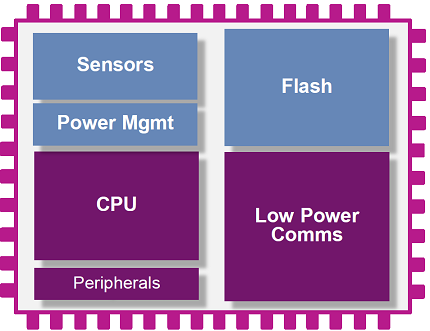




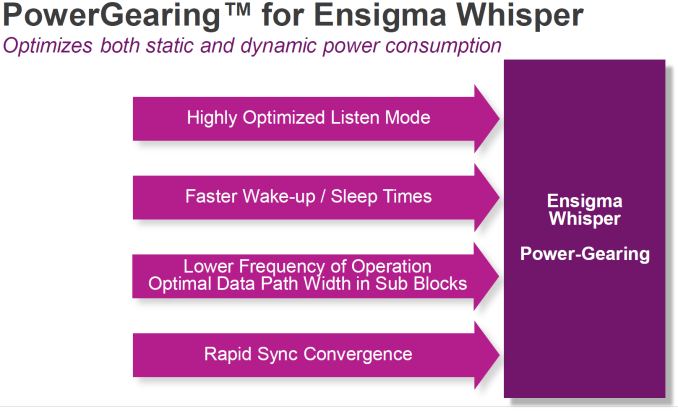
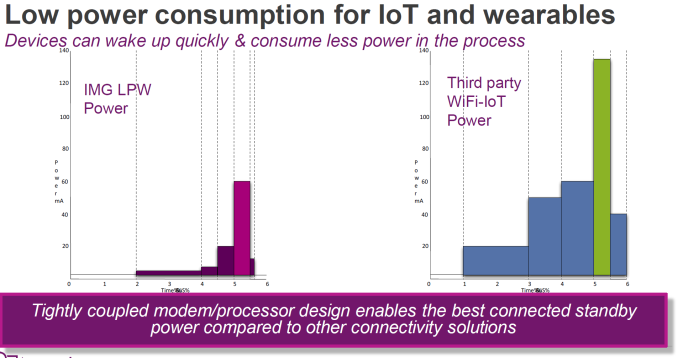
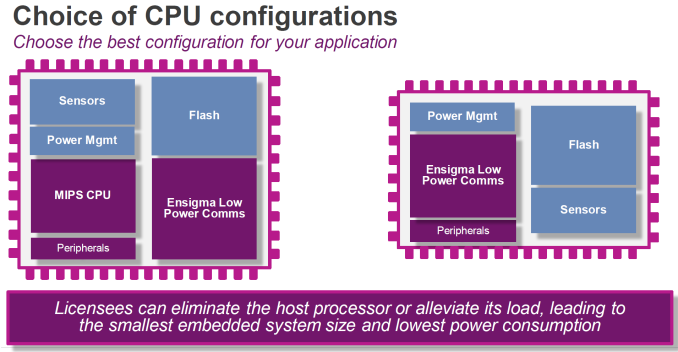
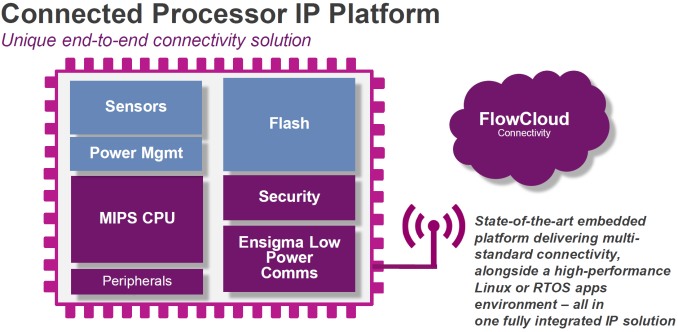

 Quote
Quote

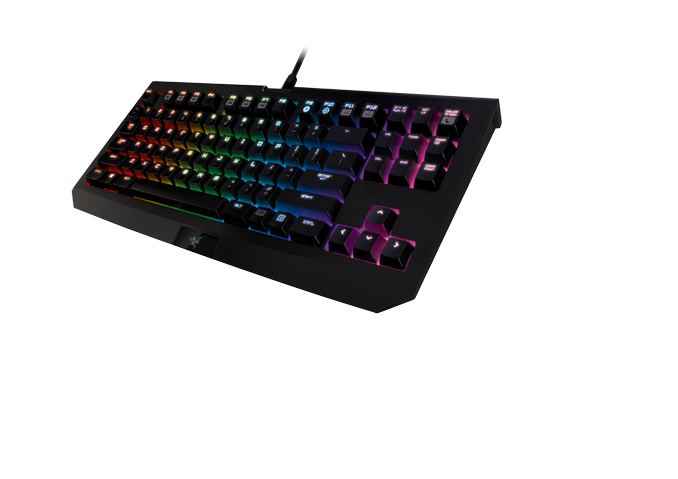

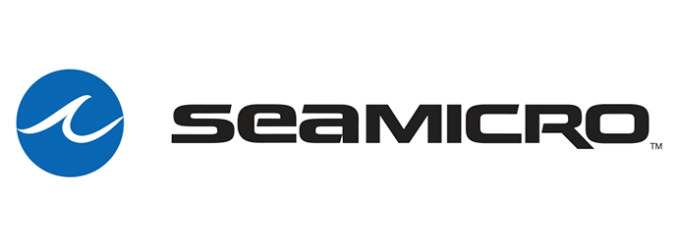
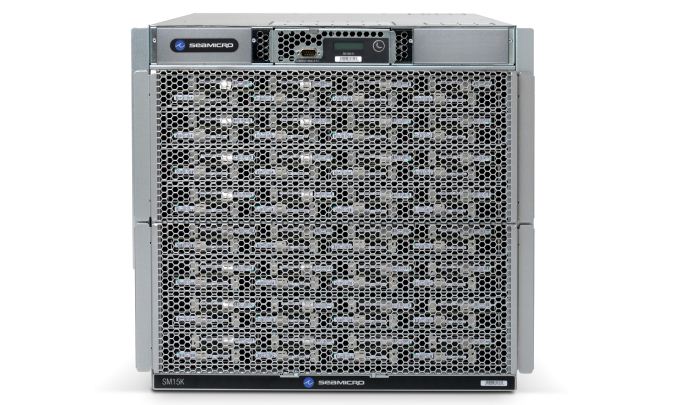
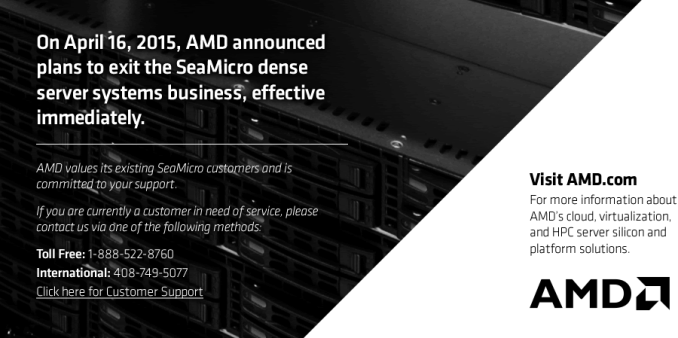

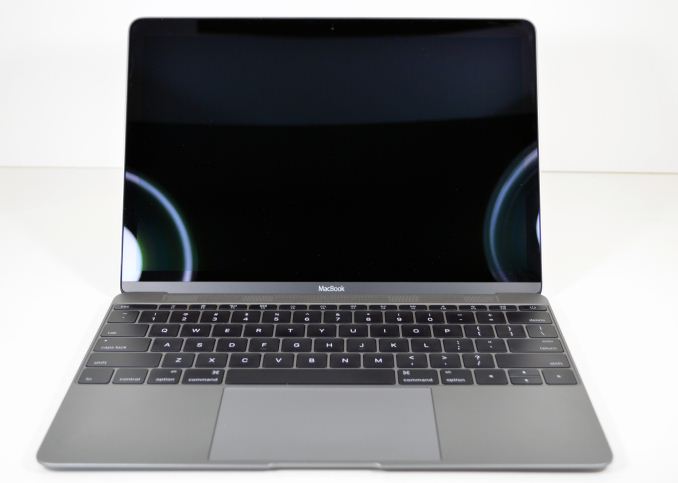
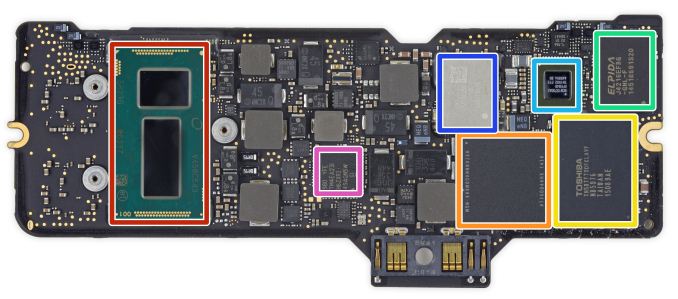
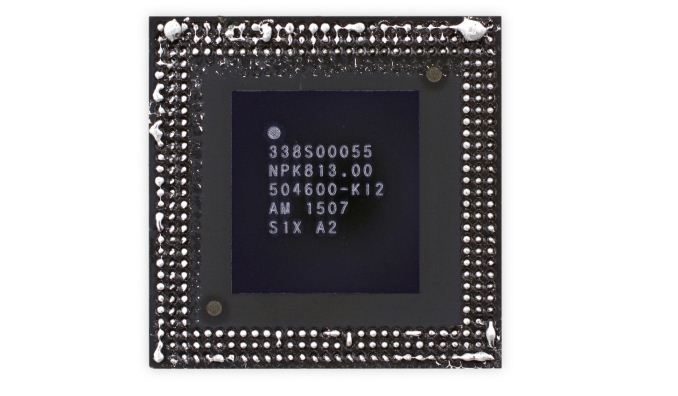
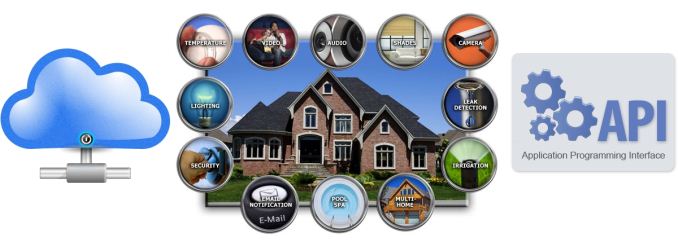
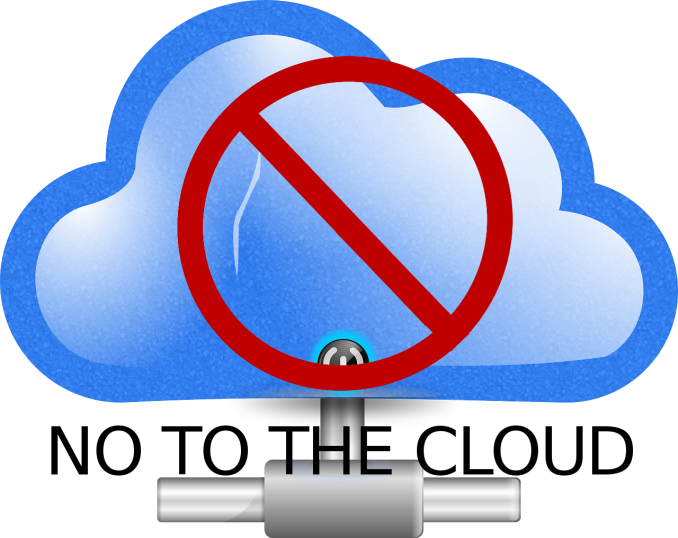

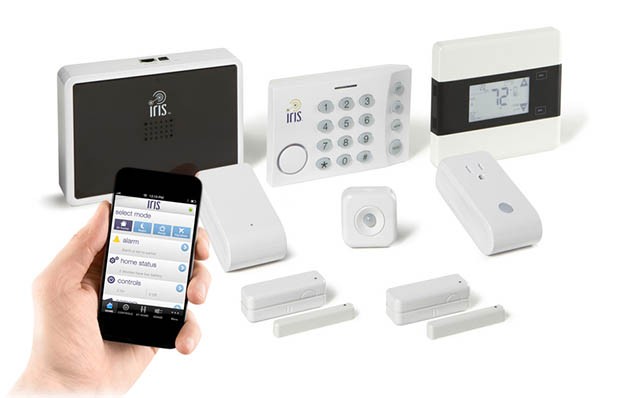
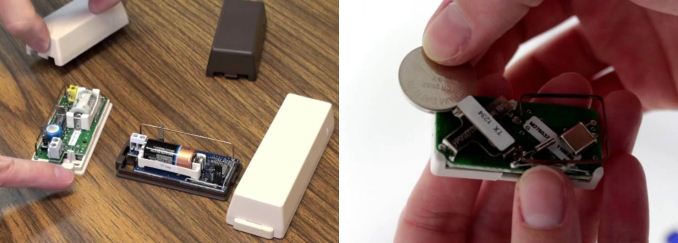
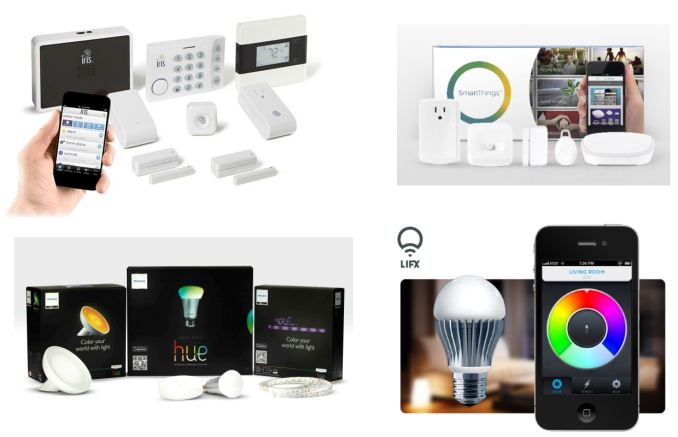
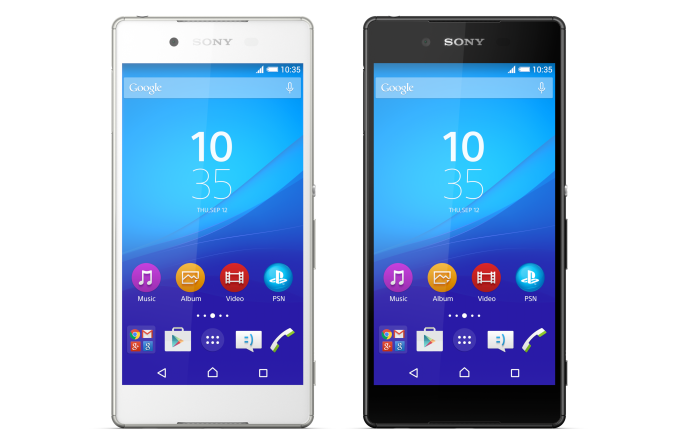

















Bookmarks